How to Look Vintage
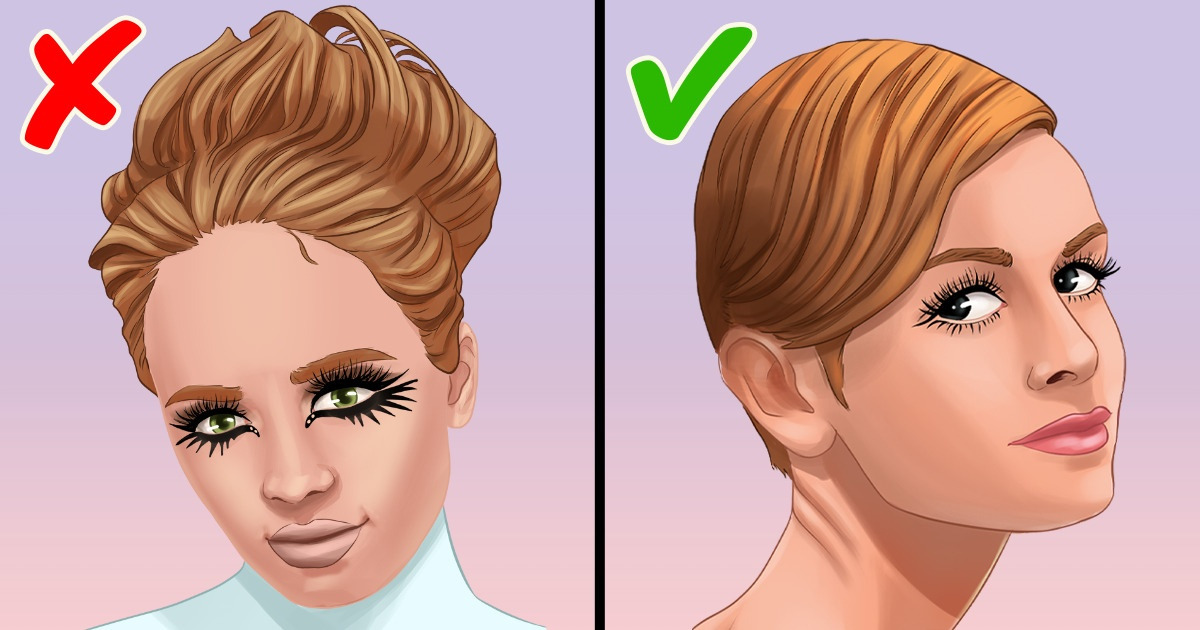
Wearing vintage has become a new luxury nowadays for various reasons — vintage clothing is eco-friendly, costs less money, and ensures better fabric quality with a unique style. The word ’’vintage’’ means any garments dating back to the previous eras that are at least 20 years old. When wearing vintage, it’s essential to feel comfortable while looking stylish.
5-Minute Crafts prepared this guide for you to give you some useful tips on how to amp up your vintage look when combined with contemporary and retro pieces.
Way 1: Wear retro clothes with key vintage details.
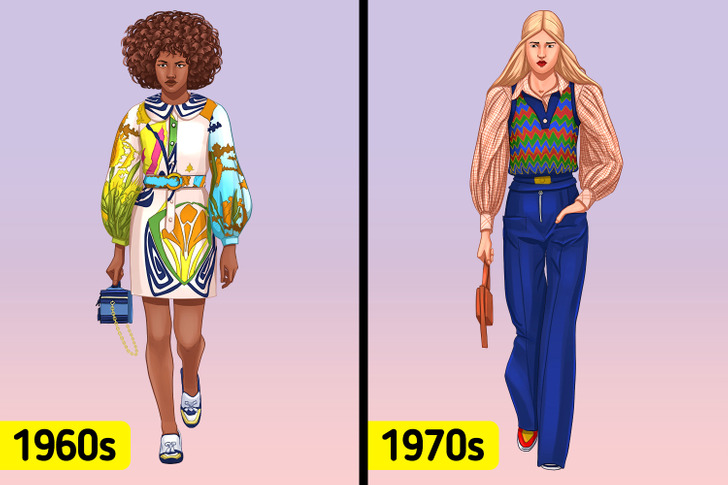
- There’s a difference between retro and vintage. Vintage became popular in the ’60s, and is related to any kind of garment dating back to a previous era or period, and is at least 20 years old or more, up to 100 years. Retro, short for retrospective, doesn’t particularly refer to a certain period but to clothing that imitates vintage clothing’s motifs, materials, or styles. The clothing is called modern or contemporary if produced more recently.
- Today, when opting for vintage, don’t go so vintage that you look costumey. Continue experimenting. For example, you can don your long, pointed-collar summer blouses that have ’70s details by styling them with linen trousers. It’s a good idea to get into the ’60s spirit with your vibrant and colorful retro-style floral dresses.
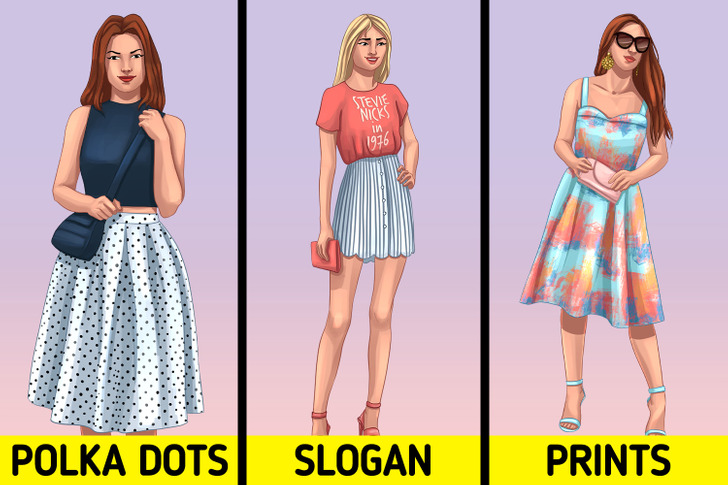
Try vintage-inspired prints. To nail an easy vintage look, turn your everyday casual clothing into retro-style clothing with prints, like polka dots, vintage florals, and such. For example, style your vintage-inspired T-shirt that has a slogan on it with a striped mini skirt, ankle-strapped sandals, and a mini clutch. Or, you can try a dress with a retro print in your favorite fit, length, and color. Pairing it with ankle-strapped sandals and a blush-colored mini clutch is a good idea too.
Way 2: Blend vintage with contemporary (modern).
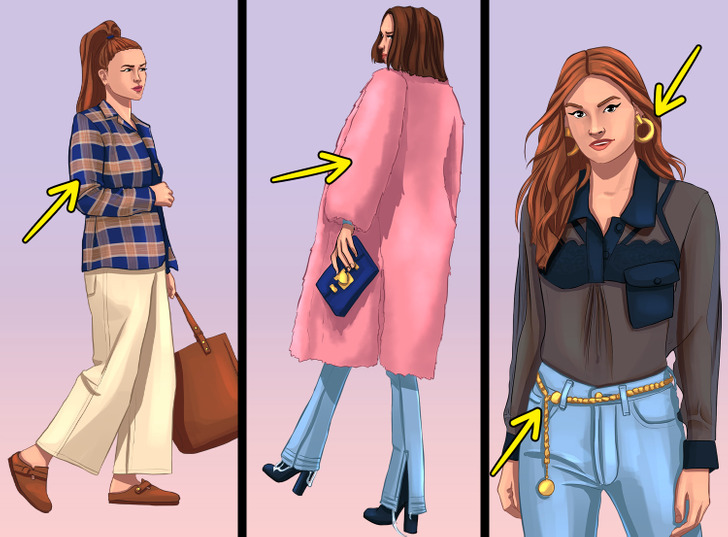
Choose your decade and find your personality. When dressing vintage, it’s better to not overdo it. That is, once you’ve discovered your style, embrace it. Vintage fashion consists of a lot of eras. You can do some research, explore each period, figure out which one your style belongs to, and go for it. For example, if you like:
- ’30s: business girls, hats, glamorous gowns, and tailored skirt suits
- ’40s: stylish, structured bust, high-waisted bikinis, and shirtwaist dresses
- ’50s: simple and practical beauty, rockabilly, and poodle skirts
- ’60s: hippy-chic, florals, Chelsea look mini dress, and bold-prints
- ’70s: platform heels, wide jeans, maxi-dress, calf-length flare dress, and statement jewelry
- ’80s: over-sized blazers, shoulder pads, and leggings
- ’90s: flared jeans and hoop earrings
- ’00s: tracksuits, graphic T-shirts, denim, crop-tops, and logo-heavy bags
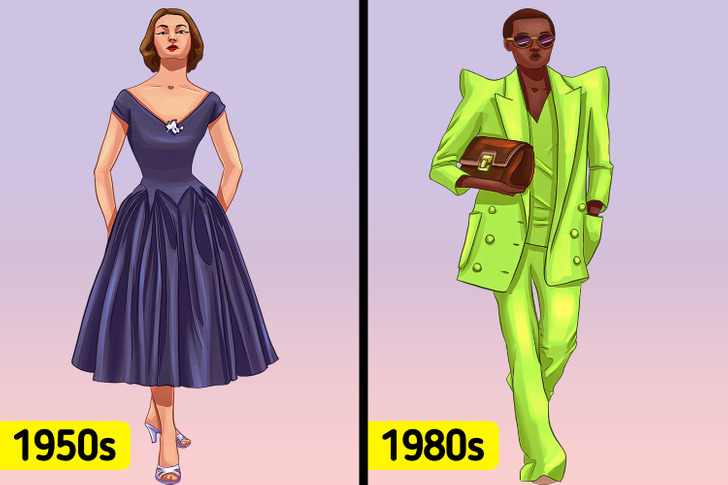
Pick vintage items that fit you well. That is, the clothes you pick should fit on you if you want to pull off a nice vintage look. The silhouettes have changed throughout the years, which affects the style and design of the clothing. Not all of them suit all body types. For example:
- In the ’50s, all clothes were fitted and women wanted that hourglass feature.
- In the ’60s, the hourglass silhouette was still there but with a softened and more casual look. Slim-fitted and boxy jackets, plaids, and shorter skirts with a defined waist were popular then too.
- In the ’70s, curves with a high empire waist starting under the bust as well as a flared silhouette were common.
- In the ’80s, the silhouette featured a new feminine style displaying powerful women in male business suits with oversized sleeves, wide shoulders, and cinched waists.
- In the ’90s, there were a few signature features that identified the decade well like oversized trousers in a baggy hip-hop look, for example, alongside classic blazers, petticoat dresses, knitwear, etc.
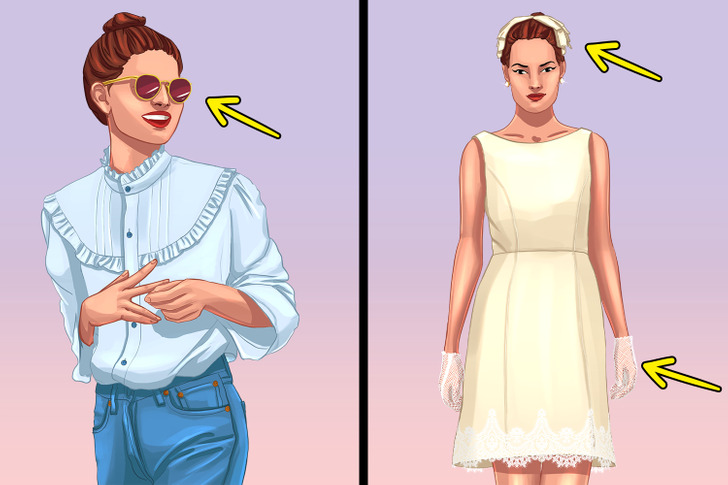
Combine your own modern clothing with vintage accessories or vice versa. Matching your ruched detailed white shirt with a pair of vintage rounded sunglasses and blue jeans is a good idea. Make sure you don’t buy old-fashioned shoes that may look irrelevant with your outfit, as some vintage shoes may go well with modern clothing but not all of them. Sometimes, a pair of lace gloves is enough to have a nice vintage look but make sure to pick shorter gloves for a daytime look.
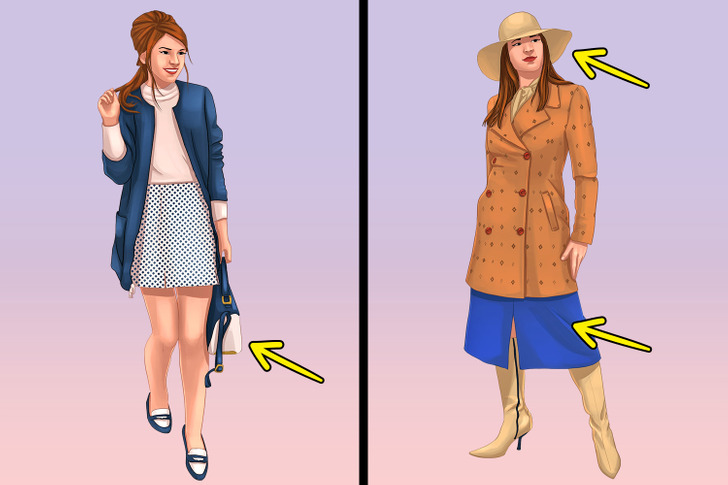
Match classic pieces with vintage. Classic style is timeless and doesn’t look outdated but stays on-trend all the time. In vintage periods, classic pieces played a major role. Going classic is easy to achieve, especially if you don’t know how to dress vintage. Therefore, start experimenting by pairing your collarless black coat with a cream sweater, a micro-plaid mini skirt, and black-white loafers. Also, you can combine your ’60s or ’70s vintage skirt, blouse, and hat with your contemporary jacket and boots.
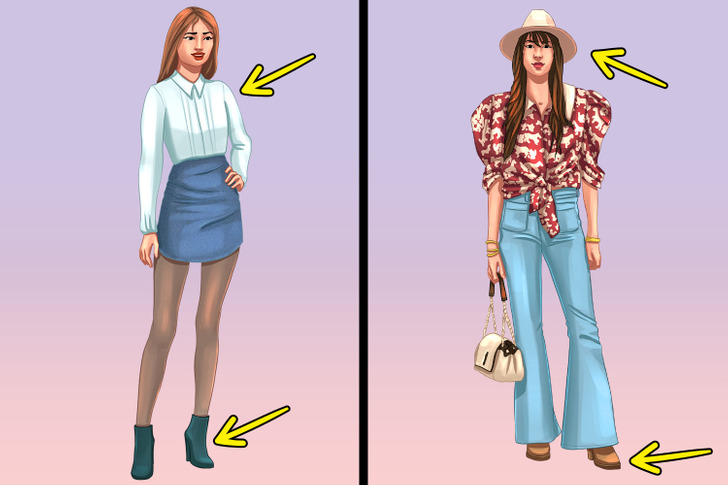
Combine with vintage denim. Previously worn jeans feel softer and more comfortable each time you put them on. Denim is also good because it tones down any vintage outfit, this way you won’t look too costumey. But be sure you opt for the right fit and a relaxed silhouette.
When you want to add color and contrast to your classic look, you can mix your pieces with denim. For example, try combining a classic white shirt with a blue jean skirt, black tights, and black ankle boots. To look taller, you can opt for flared denim with a ’70s vibe and a pair of heeled booties.
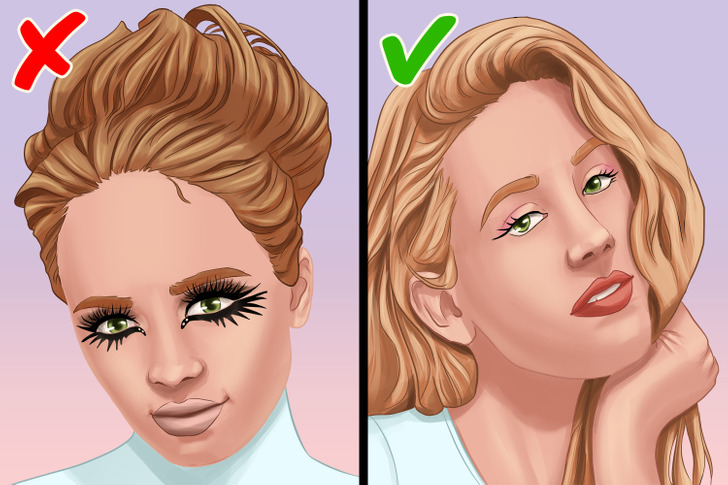
Way 3. Wear head-to-toe vintage.
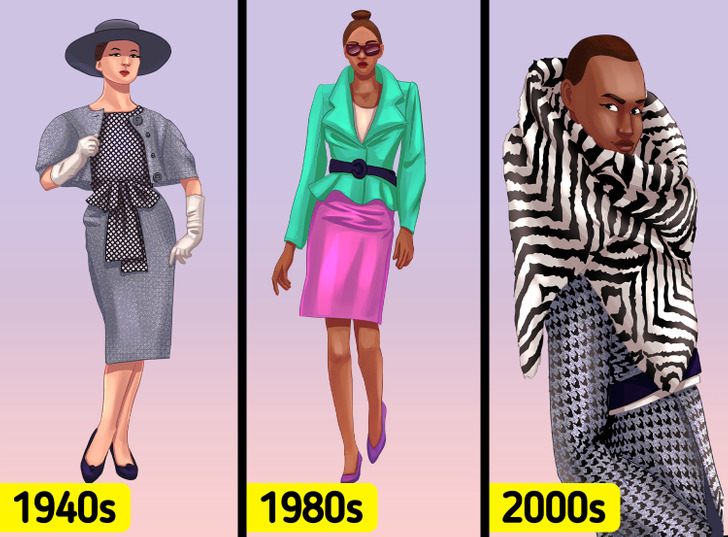
Search for the key shapes if the decade. You can choose only one decade or mix pieces from different periods. Whichever route you pick, try to not look too costumey. That is, it’s better not to wear all of the signature elements in one look at once. Pick one shape from a certain decade and play around with other pieces. For example, if you opt for the 1940s, which was famous for its slim silhouettes, you can pick any piece including unadorned blouses, bolero/peplum jackets, dirndl skirts, bullet bras, or trench coats.
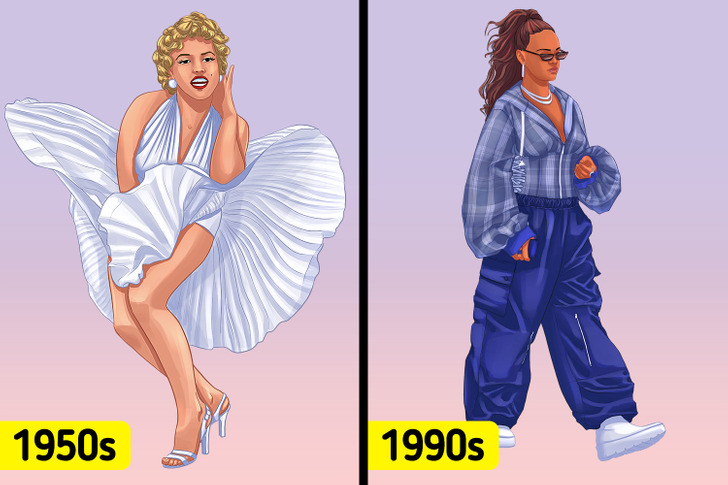
Know the key designs for the decade. In order to not look too costumey, select one or 2 statement designs. For example, the ’50s silhouette was naturally full of fit-and-flare dresses with cinched waists and belts, flared or pencil skirts, gingham, or polka dot garments. On the other hand, ’90s designs were more relaxed sporty looks with cargo pants, pleated skirts, bike shorts, and such.

Pair with key accessories, like sunglasses, jewelry, hair accessories, scarves, and hats, and ensure they’re in the proper shapes. To avoid looking too costumey, pick just one or 2 key pieces. For example, if you want to have a ’50s look, ensure your gloves are short during the day, and long in the evening. Or, you can consider colorful, geometric-shaped pieces for your 1960s look. For an ’80s look, it’s a good idea to choose large colorful gemstone statement earrings.
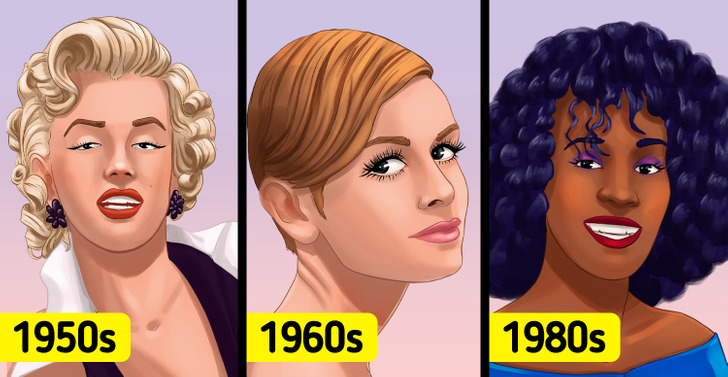
Pay attention to the make-up and the hairstyle. Take, for instance, the ’50s era, which was full of glamour, red/pink lipstick, pastel pink blush, soft eyeshadow, winged eyeliner, and feminine eyebrows. The ’50s hair was, however, full of poodle looks, rockabilly styles, glamorous pin curls, pixies, bandana-wrapped styles, and such. Make sure you don’t go for a hairstyle and makeup just because it was the fashion then. Instead, find a suitable hairstyle and makeup for your face, and go for it.
Along those same lines, the long/false lashes of the ’60s can be combined with signature hairstyles like afros, a side-parted pixie with bangs, hippie or bombshell hair, a Sassoon cut, and more. The 1980s make-up trend, however, featured flattering eyeshadows in purples and pinks with big volume hairstyles, curls, perms, punk, and ponytails with scrunchies. If you aren’t comfortable with the decade’s makeup trends, choose shades that you will feel comfortable with.
Bonus: How to mix the eras or periods.
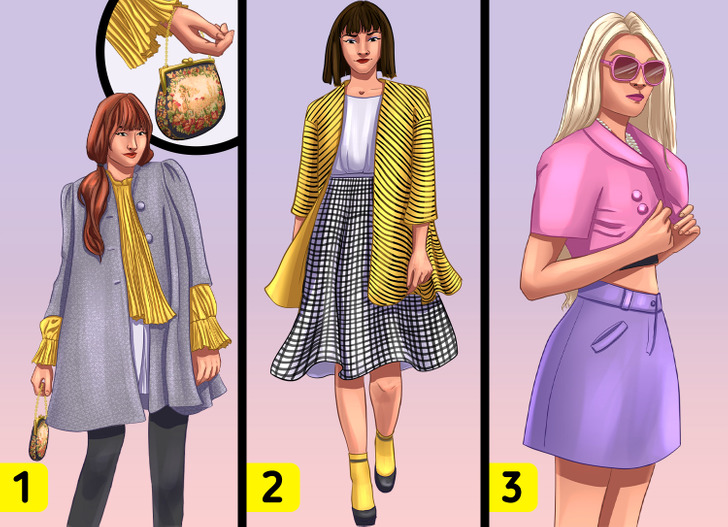
To wear head-to-toe vintage, play around with what you have. Start by blending the vibrant color combinations of textiles and silhouettes with contrasting patterns, for example.
Tip 1. You can match your 1960s brocade jacket with some minimalist shoes from the ’90s. For example, think about flat Chelsea ankle boots, or anything with a clunky platform heel.
Tip 2. If you’ve got some quality capes from the ’50s or ’70s, you can complete your look with a ’30s beaded clutch bag. Make sure you go for more unusual geometric patterns and structures.
Tip 3. It’s a good idea to pair an ’80s skirt, a modern tube top, a ’40s cropped jacket, ’80s sunglasses, and ’80s beads. It works well, because the color combination is complimentary, and the styles are all reminiscent of the ’80s.
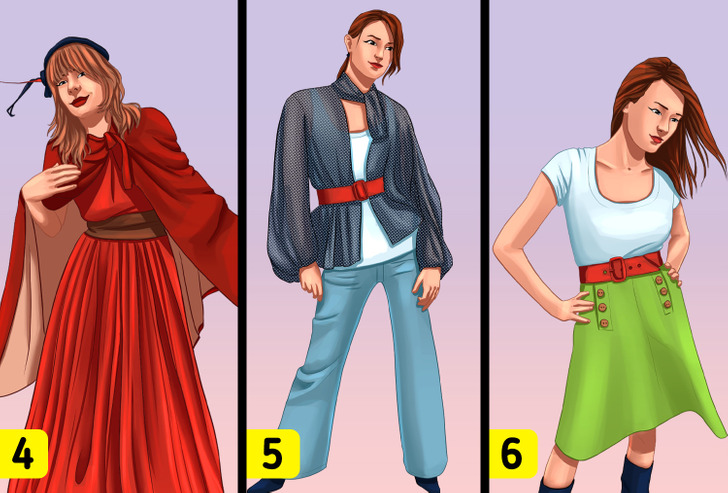
Tip 4: The combination of a ’60s rose-colored chiffon dress, an ’80s belt, a ’30s velvet cape, and a ’40s hat will give you a head-to-toe vintage look.
Tip 5. You can also try a sheer polka dot ’80s blouse worn over a modern tank top and jeans with a ’60s red vinyl belt.
Tip 6: If you have a ’70s apple green skirt with sailor-style wooden buttons, you can complete your look with a ’60s belt and modern tee.